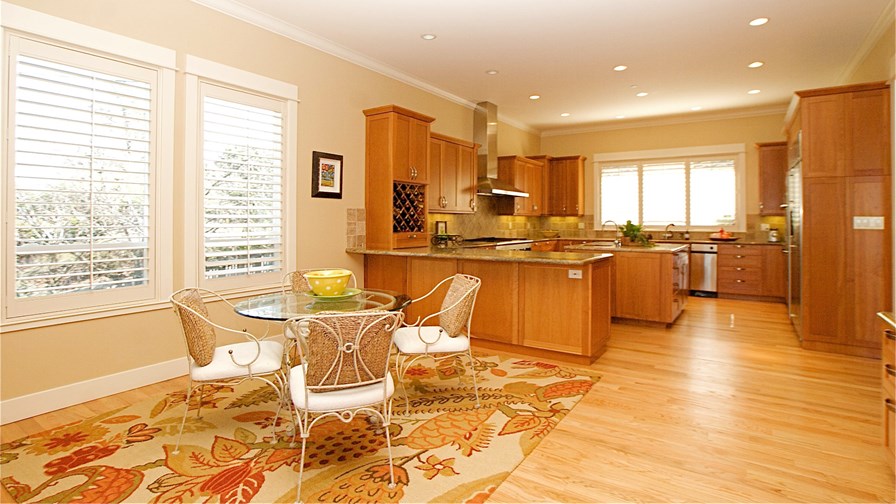
via flickr © brad.coy (CC BY 2.0)
- Hybrid approach to LPWAN build-out
- Supplement towertop gateways with 'shared' LoRaWAN gateways on WiFi hubs
- Several European telcos interested
TrackNet, the European start-up we covered last week (see - Low-powered WAN IoT strategies to be showcased at MWC) has released some more detail to TelecomTV in the run-up MWC where it’s going to reveal all on its operator solution for indoor LPWAN coverage for homes. Co-founder Thorsten Kramp told me that the original LoRaWAN idea (Thorsten was a co-author of the LoRaWAN specification) was that you could cover huge territories and connect millions of devices with relatively few LPWAN gateways… in theory.
That deployment model turned out to be not that easy to execute, mostly because of the obvious chicken and egg situation. To get national coverage you still need to spend a lot of money on gateways to the network but at the beginning there aren’t many end devices available and “everybody is moving slowly,” he said. “So we thought we should tackle it differently.”
LPWANs might be better at sending signals through walls than most radio technologies, but they still struggle to get into basements or deep inside large buildings. “We realised that to get a really good story on coverage we needed to address, not just outdoor, but ‘deep’ indoor coverage. This might have meant more expense and more gateways, and therefore present a more challenging business case. But not if you took a hybrid approach by building cheap LoRaWAN gateways onto WiFi hubs in the home: then the prospects start to look very different.
“For the telco or ISP it’s a very interesting proposition,” says Thorsten. “On the upside, indoor gateways are significantly cheaper to deploy while the customers provide the backhaul, the power and the maintenance,” he said.
“But your challenge becomes: on what basis would someone put up a LoRaWAN gateway and share it? So we had to find something that would give value to customers on day one. You can’t live on the promise of value three years down the track.”
To start with, WiFi attached gadgets like sensors tend to be relatively expensive. “You can pay 70 or 80 dollars at the moment for each WiFi-attached sensor for a door or a window - if you count them up then halfway through you lose interest because it is prohibitively expensive.”
The general idea is to provide the telco customer with a complete package of device hardware gateways and mobile apps. As these would be LoRaWAN devices they would have long life batteries with a low power requirement (no need to keep changing batteries) and greater reliability. The key element here is that the homeowner can buy and use anything on the network without having to buy an extra subscription to go with it. “People hate to keep adding subscriptions,” says Thorsten.
The package would include sensors (designed and manufactured for Tracknet) which can be set up all round the house on doors windows and so on - this is important, he says, because there is hardly anything for the LoRa home marketplace at a decent price-point, at present.
Then there are the out-of-house tracking sensors. These might monitor pets or children up to around 800 metres around the house, maybe up to a kilometre. “So you can monitor children for miles. With the right neighbours (also using the system) you could extend the tracking even further.
So that gets around the early chicken and egg - even without neighbours using the same system, the user gets value from day one and the more gateways are added, the more powerful the application becomes; the price point for LoRa sensors will be lower than WiFi equivalents but have much better battery life and better range for the home, he claims.
For the deploying telco the hybrid approach has huge advantages. While the network will still require “tower-top” deployment, Thorsten reckons that could be reduced by as much as 70 per cent - the indoor WiFi hub-based gateways will be doing most of the heavy lifting.
And, much as telcos would love home IoT to generate extra cash, the connectivity part of this equation with tiny amounts of data driven over a broadband link that the user is already paying for, simply can’t justify a traditional charging model. At least not in the home market - industrial is different.
There will however be value added services available like IoT device monitoring and parental controls that the operator can probably tap .
So how successful is this approach likely to be?
One big advantage is that, like many successful network technologies, it works from the end device outwards, rather than from the top down. Ethernet is the best example of this. It simply drove the network market from 10 Megabits per second on coax all the way up through twisted pair copper and fibre and onto the carrier Ethernet we have today, vanquishing everything in its path for the simple reason that, at any point, it was more viable to upgrade and extend the network while protecting the vast device base, than it was to suggest starting afresh with a new and improved scheme.
It’s just possible that the IoT market might exhibit something like that characteristic too.
Email Newsletters
Sign up to receive TelecomTV's top news and videos, plus exclusive subscriber-only content direct to your inbox.




